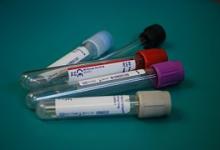APLAR 2025: What’s New in RA Management? Save

Under very high temperatures in sunny Fukuoka, Japan, APLAR 2025 has brought together hundreds of Rheumatologists from across the world. Among the most anticipated sessions, the unveiling of the updated 2025 recommendations for RA treatment, presented by Josef Smolen in the plenary session on the first day of the conference, has sparked attention.
Although not yet formally published, these updated recommendations represent a refined consensus that simplifies decision-making while reinforcing the importance of treat-to-target principles in RA.
From the first recommendation for management of RA in 2010 to the last update in 2022, the task force had anticipated that an update may become necessary in the next 3 years.
For this edition, 2 systematic literature reviews were performed, one on efficacy including 65 manuscripts and one on safety including 74 manuscripts.
I have summarized the main updates below. While the overarching principles remain generally the same, with only a few wording changes, some recommendations have been modified.
Recommendation 1-3 remain mainly similar, emphasizing importance of early treatment with DMARDs with remission as a target although the target has been updated following the ACR/EULAR criteria for remission in RA according to the 2022 revision and continue to propose a tight disease activity monitoring until remission is reached. On the other hand, EULAR continues to recommend methotrexate (MTX) and short-term glucocorticoids (GC) as the first treatment strategy for RA (leflunomide or sulfasalazine should be considered, in case of CI to MTX); reinforcing the unsurpassed benefit of the MTX+GC combination in early RA, citing the recently published NORD-STAR trial. GC use was voted with a very high level of agreement although the task force still highlights the importance of tapering and discontinuing as rapidly as clinically feasible. The most significant change in the updated 2025 recommendations concerns the management of patients who do not respond to first-line therapy. In contrast to the previous version—which recommended escalation to a bDMARD only in patients with poor prognostic factors—the task force now advises the addition of a b/tsDMARD in all patients following first-line failure, regardless of prognosis. This change was supported by a high level of agreement (mean score 9.4 ± 1.0).
The remaining recommendations remain largely consistent with previous guidance, but with subtle refinements. Notably, JAK inhibitors have now been included alongside IL-6 inhibitors as preferred options when csDMARDs cannot be used as co-medication.
Lastly, Recommendation 9 has been updated to discourage treatment discontinuation, even in patients with sustained remission. While dose tapering may be considered, full withdrawal of therapy is not supported.
Overall, the 2025 updates introduce a limited number of changes, yet they carry meaningful implications for both patients and clinicians in everyday practice. The most significant shift—recommending escalation to a b/tsDMARD in all patients following first-line failure—marks a clear move toward simplification and early optimisation of treatment.
However, an important question arises: how accessible are these therapies in practice, especially in settings where national policy or funding frameworks have not yet caught up with international recommendations? In the UK, for example, despite the updated EULAR stance, it remains common clinical practice to reserve biologic DMARDs for patients who not only fail methotrexate but also demonstrate severe disease activity or have failed at least two csDMARDs, in line with current NICE guidelines.
In conclusion, while the 2025 recommendations represent an evolution in RA management, their full impact will depend heavily on local adaptation, reimbursement policies, and clinician discretion.










If you are a health practitioner, you may Login/Register to comment.
Due to the nature of these comment forums, only health practitioners are allowed to comment at this time.